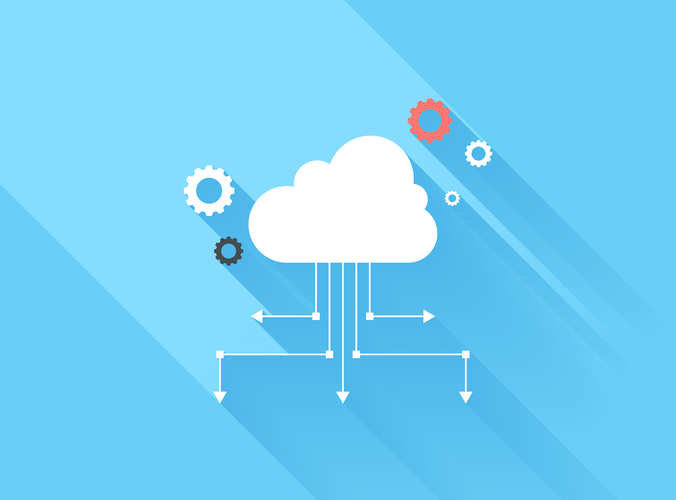Content
- How Does Banking as a Service Work?
- Benefits of Banking IT Services Apps for Your Business
- There is no need to get a banking license
- Banking as a service: the key to the future of financial institutions
- BaaS as future of finance: Challenges and opportunities
- I Have an Idea for an App. Now What?
- How Banking-as-a-Service (BaaS) Can Benefit Banks in 2023
- Buy Now Pay Later Report: Market trends in the ecommerce financing, consumer credit, and BNPL industry
After all, connecting with a bank and developing financial products on top of that necessitates stringent data security and compliance protocols. In reality, 43% of customers believe banks will look after their financial security in the long run. The physical infrastructure, also known as “Infrastructure as a Service” , is provided by the banks.

They may be provided by the bank itself or through its agents who act on behalf of the bank . Create an account and start accepting payments—no contracts or banking details required. The writer, straddles marketing, advertising, and content, with a love for crafting brand narratives, agnostic of media or platform. When not working, he shares a glass a bourbon or two, couched on a bean bag playing FPS video games or binging on Better Call Saul with family. Naturally, they are giving traditional banks a run for their money in this previously unbanked segment.
How Does Banking as a Service Work?
It can be used to offer banking services in environments where a large group of users already exist, including chains of grocery stores, hypermarkets or existing online portals. Brands refers to the businesses (usually non-banks) that want to embed financial services into their existing products and services with the goal of enhancing the customer experience for their customers. Marqeta is a provider of physical, virtual, and tokenized credit cards, debit cards, and prepaid debit cards that offer customized rewards, card controls, and customer preferences. Additionally, it serves as a payment processor for many industries, using its modern, embedded, open-API BaaS platform to serve digital bank and non-bank customers.

By offering banking services through digital channels, banks can easily expand their reach to customers who may not live near a physical branch, said Slabicki. In Banking as a Service, an API connection to licensed banks and BaaS software platforms from third-party providers lets these brands offer their end customers embedded financial services. With the digitization of processes growing at a rapid pace, businesses recognize the need to offer increasingly innovative digital experiences.
Benefits of Banking IT Services Apps for Your Business
Because everything is in one system, you don’t have to worry about complicated funds management and customers only have to share their information once, during onboarding, to access a variety of different financial services. This also allows you to continue focusing on your core product while your provider handles the work needed to solve your customers’ financial pain points. The Brush, which started as appointment software for salons, now allows customers to access banking features, including the ability to process payments, access capital, get business cards, and open financial accounts—all in one place. All these benefits are on top of The Brush’s core scheduling and appointment-booking features. BaaS is a type of financial technology that helps software platforms access banking capabilities traditionally only offered by a licensed bank. Businesses can then conveniently provide custom banking services within their platform, and thus, prioritize a better overall experience for their customers.

Simply put, BaaS makes it easier for brands to do business with partners. License holders refers to legacy banks that provide the licensing for fintech aggregators and/or other providers. Banks rent out their bank licenses https://globalcloudteam.com/ as a service to enable partner brands to provide financial services. This is an important element because it ensures brands are embedding compliant financial services into the mix for the protection of all.
There is no need to get a banking license
BaaS allows banks to integrate external parties’ products and services into their own offerings allowing them to provide their customers with an end-to-end customer experience without having to build new products. In the case of BaaS, the bank provides access to specific banking capabilities such as payments, onboarding, and lending, allowing non-bank companies to connect users outside of the bank’s customer base to access its banking services. The concepts of open banking and BaaS are often confused as both involve banks connecting to non-banks through APIs.
- Although the FFIEC has resulted in a greater degree of regulatory consistency between the agencies, the rules and regulations are constantly changing.
- The physical infrastructure, also known as “Infrastructure as a Service” , is provided by the banks.
- Other sources of revenue could include set-up charges or revenue-sharing agreements.
- But it is difficult even for larger institutions that are often held back by a mountain of legacy IT.
- Global Payments Accept payments online, in person, or through your platform.
- The customer has the option of choosing their payment schedule in advance.
This allows companies to reduce costs, increase efficiency, and stay competitive in a rapidly changing business environment. For use by aggregators, other banks, and non-financial businesses,providersmake their banking license, goods, operations, and/or technology available . Open banking has led to the emergence of BaaS platforms, where companies are providing increased financial transparency by making their APIs accessible for others to create new services.
Banking as a service: the key to the future of financial institutions
BaaS has already achieved a great deal in improving access and implementation of financial services, which both businesses and consumers are benefitting from. We are still at the beginning of the easy-access financial services era. It’s likely that the most significant improvements are still ahead of us. BaaS was designed to solve many of these key problems and offer businesses a faster, simpler way to offer financial services.
The primary objective of BaaS is to complete a service in a timely and speedy fashion. With the widespread adoption of banking software across multiple industries, the demand for banking as a service is rapidly growing. Increased penetration of technological advancements, such as blockchain, artificial intelligence , and online banking also give an enormous boost to the market. Thanks to BaaS platforms, both financial and non-financial organizations address a variety of challenges, automating numerous tasks, improving customer engagement, and cutting down expenditures.
BaaS as future of finance: Challenges and opportunities
Department of Treasury obligations, agency securities, and corporate debt. One of the greatest factors in recent years in the movement of deposits was the tremendous growth of money market funds whose higher interest rates attracted consumer deposits. Universal banks, banking as a service service more commonly known as financial services companies, engage in several of these activities. As Global Head of Sales, Kevin is responsible for leading i2c’s business development initiatives and cultivating strategic alliances across North and South America.
